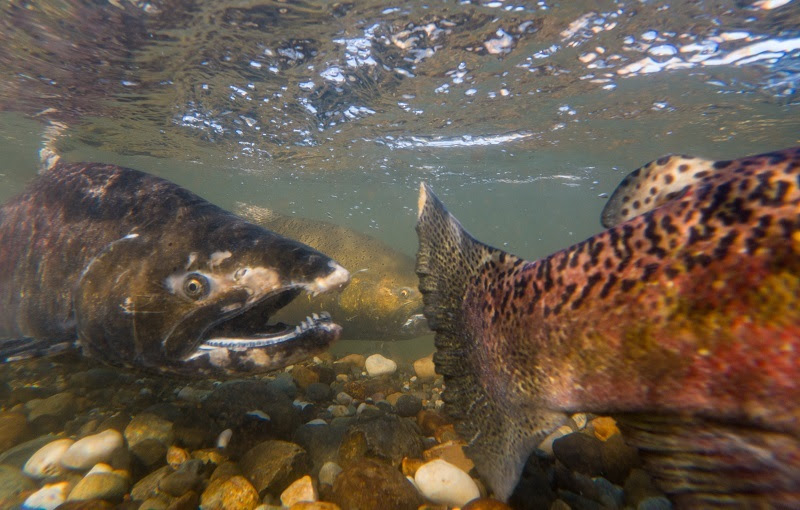CDFW Director Bonham To PFMC: “Close Ocean Salmon Fisheries Along The California Coast”

It’s no secret that another closure of salmon fishing is set to hit California for the second year in a row. As the Pacific Fishery Management Council continues its meetings in Seattle this week, California Department of Fish and Wildlife director Charlton Bonham sent a letter to PFMC advocating for another closure to the ocean salmon season due to more low stocks and run projections.
Here’s the letter from Bonham to PFMC: sent earlier this week:
April 8, 2024
Dear Mr. Brad Pettinger:
At its March 2024 meeting, the Pacific Fishery Management Council (Council) voted on and approved public review of three alternatives for salmon fisheries along the California coast. The first two alternatives offer opportunities for limited commercial and recreational fishing while the third alternative calls for a complete closure of salmon fisheries off California. The California Department of Fish and Wildlife (CDFW) recommends the Council to close ocean salmon fisheries along the California coast and otherwise constrain salmon fishing in Council managed areas to minimize impacts to Sacramento and Klamath origin Chinook salmon stocks.
Salmon stocks continue to be impacted in California from ongoing issues associated with drought and climate disruption as well as many other factors impacting stock recruitment relationships. California is experiencing a high degree of variability in precipitation, water temperatures, and air temperatures, all of which are impacting the ability of salmon to survive and reproduce. Central Valley spring-run Chinook adult returns in 2023 were perilously low following the 2019-2021 drought and Klamath fall Chinook remain overfished for the seventh consecutive year as the dams are being removed and the available habitat expanded via this historical restoration project. Without any fishing in ocean fisheries South of Cape Falcon or inland in the Central Valley, returns of Sacramento River fall-run Chinook salmon are projected to be (213,600) slightly over the 2024 conservation objective and guidance provided by National Marine Fisheries Service (NMFS) of 180,000 salmon, but still well below the historic average for this stock. Additionally, returns to the Upper Sacramento River were historically low in 2023 and are expected to be similarly low in 2024. With no method to differentiate Chinook salmon from specific watersheds in the ocean harvest, any amount of harvest will likely have an outsized impact on returns to the Upper Sacramento River and have lasting impacts on the ongoing rebuilding in this watershed. Prior to the stock collapse in 2008 and 2009, the Upper Sacramento River sub-basin regularly produced the most Chinook salmon in the Central Valley for many decades. Recent performance of abundance and harvest forecast tools add to the concern regarding prosecuting fisheries in 2024 given the consequences of management error are more severe when the projected harvestable surplus is marginal.
CDFW understands the significant impacts that fishery closures have on the people of California. An industry of commercial and charter fishers already impacted from fishery closures in California will continue to be impacted by a closure. Recreational anglers that pursue this fishery resource through either guides or charter boats or on their own will no longer be able to pursue that option in 2024. Fishing related businesses will be similarly impacted by associated economic losses. The people of California will have no opportunity to purchase local salmon and support this important industry. Because of the significant impacts that fall-run Chinook salmon have been experiencing and the impacts salmon have on the people of California, CDFW is taking several steps to rebuild Chinook salmon stocks across California.
In late January 2024 Governor Gavin Newsom announced a California Salmon Strategy for a Hotter, Drier Future: Restoring Aquatic Ecosystems in the Age of Climate Change. The strategy has six priorities and 71 actions that will benefit Chinook salmon stocks in California. Pertaining to ocean fisheries, the strategy calls for CDFW to increase hatchery production of fall-run Chinook salmon, diversify release strategies of hatchery Chinook salmon, and begin a pilot project to evaluate the use of parental based tagging methods. Additionally, action 5.10 calls for CDFW to work with the Council to improve Sacramento fall-run and Klamath fall Chinook salmon conservation objectives, harvest modelling, and abundance forecasting. CDFW is also engaged with the National Marine Fisheries Service, US Fish and Wildlife Service, and a coalition of commercial and recreational anglers and water users known as the Bridge Group on developing a fall- run Chinook salmon action plan for the Central Valley of California. Current efforts in that group are focused on rebuilding the Upper Sacramento River fall-run Chinook salmon stock and include immediate efforts to improve returns such as treating juvenile fish for thiamine deficiency, transferring fall-run Chinook salmon eggs from state facilities, and diversifying release locations to increase juvenile survival rates. CDFW will also be recommending the California Fish and Game Commission close the recreational salmon fishery in inland rivers in the Central Valley and Klamath River Basin. Protecting these stocks across the ocean and river phases of their life history will be critical to maximizing escapement in 2024 and recruitment to future fisheries in the years to come.
As CDFW works with its partners on rebuilding the fall-run Chinook salmon stocks in California, CDFW recommends the Council to support these efforts by closing ocean fisheries in waters off California and otherwise constrain salmon fishing in Council managed areas, so that we can combine these efforts to support an adaptive and robust fall-run Chinook salmon ocean fishery in the future. With these efforts, CDFW seeks to bring stability to fall-run Chinook salmon stocks and provide a mechanism to adaptively manage stocks, allowing for commercial and recreational anglers as well as the public to utilize and enjoy this iconic species for years to come.
Sincerely,
Charlton H. Bonham Director
ec: Melissa Miller-Henson, Executive Director Fish and Game Commission
California Department of Fish and Wildlife
Kevin Thomas, Deputy Director Regional Operations
Craig Shuman, D. Env., Regional Manager Marine Region
Marci Yaremko, Environmental Program Manager Marine Region



